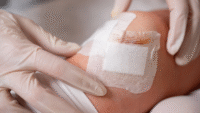Early detection and response are key.
Takeaways:
- Substance use disorder (SUD) affects people of all ages, genders, races, and religions regardless of socioeconomic status, professional accomplishments, educational level, or intellectual ability.
- Undiagnosed and untreated SUD in healthcare professional poses risks to patient safety and healthcare facilities.
- Proactively addressing SUD in healthcare environments with awareness and education, early identification, and safe intervention can help deter drug diversion.
Substance use disorder (SUD)—a chronic, relapsing, potentially deadly condition—occurs when the recurrent use of substances significantly impairs an individual’s health and the ability to meet major vocational, academic, or personal responsibilities. This group of disorders is classified as mild, moderate, or severe based on the number of diagnostic criteria individuals meet.
When a BON disciplinary process is based on substance use disorder: Part 1
The impaired nurse: Would you know what to do if you suspected substance abuse?
The prevalence of SUD among healthcare workers is estimated to be similar to that of the general population. The American Association of Nurse Anesthetists (AANA) reports that approximately 10% to 15% of all clinicians will misuse alcohol or other drugs during their careers; an 8% incidence is reported for nurses specifically. The high levels of anxiety and emotional distress experienced by healthcare workers during the COVID-19 pandemic may increase the number who use alcohol or other drugs as coping mechanisms. Healthcare organizations must be prepared to address SUD among employees. Comprehensive diversion response programs (CDRPs) provide an effective, nonpunitive approach to identify, intervene, and support healthcare workers with SUD.
The need for CDRPs
The consequences of a healthcare worker with an SUD extend beyond the individual to include patients, coworkers, and healthcare organizations. Impairment and controlled substance diversion can be difficult to detect and address without a CDRP, and most organizations either lack a policy or have an ineffective plan in place. As a result, they’re ill-equipped to address SUD-related issues.
To better position themselves to address SUD, organizations need a CDRP that includes specific policies related to processes, such as how to respond to suspected diversion. In fact, associations and accrediting bodies, including the AANA and The Joint Commission, emphasize the importance of instituting CDRPs in healthcare organizations. In 2016, the AANA created a policy statement and policy considerations document to serve as a resource for healthcare organizations, nurse anesthesia education programs, and providers when developing evidence-based SUD policies. In 2019, The Joint Commission published an advisory encouraging all healthcare organizations to establish a comprehensive program to help detect and deter drug diversion. (See SUD harm.)
SUD harm
Undiagnosed and untreated substance use disorder (SUD) in healthcare workers not only poses potential harm to patient safety, but also exposes organizations to unnecessary risks. A recent American Association of Nurse Anesthetists position statement summarizes consequences related to SUD and impaired healthcare workers. Increased overall costs and risks to organizations include
- patient care errors and injury
- controlled substance diversion and decreased supply
- staff absenteeism
- increased SUD-related employee healthcare costs
- rising employee turnover
- hiring and training of new staff to replace employees affected by SUD
- increased potential for public and provider harm.
Paving the way for change
When developing and implementing any new policy, the first step is to assess the organization’s readiness to change and its ability to effect change. When organizational readiness for change is high, stakeholders are more likely to initiate change, exert greater effort and persistence, and implement policy more effectively.
After establishing readiness, policy development can begin. Successful comprehensive, effective, and sustainable workplace policies for responding to drug diversion must safely and appropriately address diversion suspicion and observed impairment. Ultimately, a CDRP should mitigate risk by addressing how controlled substance diversion is managed and surveilled while also creating sustainable cultural change. To begin the process of policy development, take a strategic two-step approach: evaluate current processes and educate all members of the organization.
Evaluate
Constructing an effective CDRP requires evaluating the organization’s processes for securing, distributing, recording, administering, and wasting controlled substances throughout the system. Conduct a detailed review of these processes with collaboration from key stakeholders and end users (including those from pharmacy, medical, nursing, risk management, security, administration, anesthesia, human resources, and related departments). In the review, address all opportunities for drug diversion, including ordering, delivery, distribution to providers, administration, and proper wastage and disposal.
Analysis of system processes shows that most areas of weakness result from multiple, small errors in various parts of the system that contribute to the overall problem. In other words, despite many layers of security, flaws in each layer, especially when they’re aligned, can provide an environment for diversion. Performing a systems analysis encourages stakeholders to find solutions by identifying flaws and gaps and creating enough overlap in the processes to prevent a future weakness alignment.
Educate
Comprehensive staff education and a judgment-free atmosphere are the building blocks for organizational change. Everyone in the organization must be educated about the clinical presentation of SUD, its consequences, and guidelines for addressing it. Start by establishing an environment where employees feel safe to report themselves or a colleague with SUD without fear of reprisal and with the reassurance that the situation will be managed safely and fairly. A nonpunitive (just culture) environment paves the way for developing and implementing measurable and effective ongoing education programs.
A sustainable organizational change that effectively manages drug diversion includes providing SUD treatment options, combined with alternative-to-discipline programs when appropriate, to maintain licensure and preserve the individual’s professional dignity and integrity. The possibility of re-entry into the workplace provides a powerful incentive for an individual to remain drug free. In addition, this approach is less costly than one that involves staff dismissal, recruitment, and replacement.
Key principles
A CDRP’s lasting success requires that it can identify blind spots and establish realistic short- and long-term plans. Four key principles—response and education, early identification, appropriate and safe intervention, and professional re-entry—can help guide an organization and provide clear direction. These principles serve as the foundation for creating wide-ranging change that positively affects the health and well-being of employees and the communities they serve as well as providing structure for a CDRP.
Principle 1: Response and education
Initial onboarding education for all new employees and ongoing education for all staff are essential requirements for CDRP success. Strategies can include annual competencies, systemwide awareness campaigns, training, on-boarding materials, periodic continuing education opportunities, and carefully selected guest speakers. In addition, include background checks and random urine drug screening in pre-employment requirements. (See Drug diversion education.)
Drug diversion education
Comprehensive employee education programs should focus on drug diversion and impairment risks, early identification, appropriate reporting, and employee support and include the following content areas:
- drug diversion response policies, including deterrence and policy change updates
- substance use disorder occupational risk factors and hazards of drug diversion
- substance use disorder as a disease to promote understanding and reduce judgment and stigma
- signs and behaviors of drug diversion and impairment for early identification
- proper procedure for self-reporting or anonymously reporting a coworker
- appropriate and safe intervention training
- professional re-entry options to create a supportive culture
- employee wellness promotion and support.
Principle 2: Early identification
Early identification is crucial so those with SUD receive prompt treatment and patients receive the high-quality care they deserve. Incorporate systematic and consistent methods of identification with a list of CDRP checks and balances, including all aspects of controlled substance handling and chain of custody; a random drug testing process; high-risk area surveillance (including department flexibility to increase or change surveillance when needed); and regulatory compliance and legal reporting at the local, state, federal, and licensing boards levels. In addition, appoint a task force to review specific areas of concern as appropriate, and develop and analyze departmental audits and pharmacy usage reports.
Principle 3: Appropriate and safe intervention
When drug diversion or impairment is discovered or suspected, immediately begin planning an intervention to help avoid potentially catastrophic consequences. Because of the urgency of these situations, intervention must be handled correctly the first time. The intervention process should include the following:
- Assemble an intervention team.
- Collect and present evidence to the individual.
- Recognize the potential of self-harm after an intervention and protect the individual by ensuring they’re released to someone aware of the risk.
- Properly collect a drug test.
- Obtain a bed in a treatment facility.
- Navigate the complex legal and treatment options and requirements.
Other essential considerations for providing a safe intervention include
- determining the individual’s current employment status (termination, resignation, leave of absence, medical leave)
- considering the possibility of medication tampering and communicable disease transmission and involving other departments as needed
- assessing the need for involving security, family or significant other, human resources, employee assistance, and risk management in the intervention.
Principle 4: Professional re-entry
After an intervention for SUD, the healthcare provider may want to return to work immediately. However, their ability to do so safely must be evaluated on an individual basis; not all providers will return to professional practice. Intensive inpatient treatment and after-care increase the potential for long-term recovery. Readiness for re-entry is a collaborative decision among the individual, a certified drug and alcohol counselor, the state’s alternative-to-discipline monitoring program, and the employer.
An established professional re-entry program must be in place before a provider in recovery can return to the workplace. It should focus on risk management and consequences to assist providers with a history of SUD to safely reintegrate into the practice setting. The overall objective of this principle is to create an environment that addresses the retention of a current employee with an SUD history and considers hiring new employees with a successful SUD recovery.
Save lives and careers
Addressing SUD in healthcare organizations through awareness education, early identification, and safe intervention can help deter drug diversion. A comprehensive plan helps minimize harm and potentially saves lives and careers. Developing organization policies that address the four key principles of a CDRP is a key step in preventing SUD-related adverse outcomes. In addition, policies that support the fair and uniform management of providers with SUD help create a nonpunitive environment that encourages prompt reporting, appropriate treatment, and the potential for re-entry into professional practice. AN
To view a list of references, visit myamericannurse.com/?p=71906.
Linda Stone is the assistant program administrator and an assistant clinical professor at the University of North Carolina Greensboro Nurse Anesthesia Program and is the current chair of the AANA Peer Assistance Advisors Committee. Julie Rice is manager of Health, Wellness, & Peer Assistance Programs at AANA in Park Ridge, Illinois. Rodrigo Garcia is chief executive officer at Parkdale Center for Professionals in Chesterton, Indiana.
References
American Association of Nurse Anesthetists. Addressing substance use disorder in anesthesia professionals. 2016. aana.com/docs/default-source/practice-aana-com-web-documents-(all)/addressing-substance-use-disorder-for-anesthesia-professionals.pdf?sfvrsn=ff0049b1_4
American Psychiatric Association. Diagnostic and Statistical Manual of Mental Disorders. 5th ed. Washington D.C.: American Psychiatric Association; 2013.
American Society of Addiction Medicine. Public policy statement on physicians and other healthcare professionals with addiction. 2020. asam.org/docs/default-source/public-policy-statements/2020-public-policy-statement-on-physicians-and-other-healthcare-professionals-with-addiction_final.pdf?sfvrsn=5ed51c2_0
Bryson EO, Hamza H. The drug seeking anesthesia care provider. Int Anesthesiol Clin. 2011;49(1):157-71.
Carter T, Heaton K, Shirey MR. Should nursing institute random drug screening? Workplace Health Saf.2019;67(12):604.
Garcia R, Soelberg C, Wagner D. The roles of the anesthesiologist, pharmacist, and nurse in detecting and preventing opioid diversion and misuse. Anesthesiology News. July 2019.
Garfield S, Franklin BD. Understanding models of error and how they apply in clinical practice. Pharm J. 2016;296(7890).
Kunyk D. Substance use disorders among registered nurses: Prevalence, risks and perceptions in a disciplinary jurisdiction. J Nurs Manag. 2015;23(1):54-64.
The Joint Commission. Drug diversion and impaired health care workers. Quick Safety. 2019;48(3). jointcommission.org//media/tjc/newsletters/quick_safety_drug_diversion_final2pdf.pdf
McLellan AT. Substance misuse and substance use disorders: Why do they matter in healthcare? Trans Am Clin Climatol Assoc. 2017;128:112-30. ncbi.nlm.nih.gov/pmc/articles/PMC5525418
Pfefferbaum B, North CS. Mental health and the COVID-19 Pandemic. N Engl J Med. 2020;383:510-2.
Poorolajal J, Haghtalab T, Farhadi M, Darvishi C. Substance use disorder and risk of suicidal ideation, suicide attempt and suicide death: A meta-analysis. J Public Health. 2016;38(3):e282-91.
Weiner BJ. A theory of organizational readiness for change. Implement Sci. 2009;4:67.



















2 Comments.
I was suspected of diversion, confessed after a few terrifying days of not working and awaiting resulting of a drug test. I was terminated and self reported to my state’s alternative to discipline agency. Unfortunately the BON suspended my license anyway and I was kicked out of the program even though by the time they made their decision I had completed intense outpatient treatment, had almost 6 months sober, and had not worked as a nurse during that time.
I totally get I made the biggest mistake of my life. I just wish I had been given the chance to keep my crimes anonymous since I self reported and was doing every single thing asked of me. My case is completely public to anyone looking up my license. It sucks that no matter how far I come in my sobriety, I will always carry the stigma around with me if I want to work as a nurse.
I get the board has to protect the public. But the extremely stringent standards set by the alternative to discipline agencies should be enough for a first time offender (3-5 year contracts to obstain from any mood-altering substances including alcohol/cough medicine, allergy medicine, etc. Random UAs, multiple 12 step meetings per week, treatment (outpatient or in patient), peer support meetings, therapy twice a month, permission to go on vacation. Is this not enough?
I will appreciate a second chance once I get my license back. I am incredibly grateful I was not arrested.
Everything happens for a reason and one day you will look back without regrets. You now have insight that you can’t get from a book or a lecture. One day you will light the way for others and you will realize that if it had not been for your mistake you would not be able to help those who share this disease. I admire your openness and honesty.
19 years ago I started on my journey. I found the person I lost during those dark days in a prison made all on my own. Self acceptance is a beautiful thing. I don’t regret the past and I look forward to my future.
God Bless you! I will keep you in my prayers.